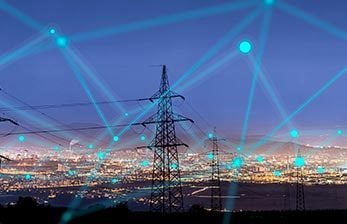Last updated on October 12th, 2022 at 09:52 am
How AI in the Energy Sector Can Help Solve the Climate Crisis
Have you not complained about the crisis that is looming large in our environment? The news reports of untimely floods, missing rain patterns, fires in forests, carbon emissions and smog affect each and every one of us. The Davos meeting of the World Economic Forum threw up some important measures that we need to take in enabling AI, ML and technology as a whole in symbiotically tackle the climate crisis of all times.
The main cause of the changes in climate is being attributed to emissions of carbon and greenhouse gases. And each and every person in tandem with AI, technology and the big industrial players have a bounden duty to support such measures and immediately move to reduce these emissions if we wish to halt such catastrophic climate changes. Noteworthy is the funding of nearly billion dollars in such ventures by Bill Gates and Facebook’s Mark Zuckerberg.
Here is the list of the top suggestions. In all these measures one looks to technology and artificial intelligence to aid and achieve what we singularly cannot do. This is because the noteworthy improvements brought about by AI are
AI helps compile and process data:
We just are not doing enough to save our planet. The agreement between countries in Paris to be implementable means elimination of all energy sources of fossil-fuel. AI enabled with intelligent ML algorithms can go a long way in processing unthinkable volumes of data and providing us with the insight and forecasts to reverse the climatic changes, use of fossil fuels, reduction of carbon emissions, waste etc, and setting up environment-friendly green systems of operations.
AI can help reduce consumption of energy by ‘server farms’
The widespread use of digitalization has led to server farms meant to store data. According to the Project Manager, Ms. Sims Witherspoon at Deepmind the AI British subsidiary of Alphabet when speaking to DW said that they have developed a bot named Go-playing with algorithms that are “general purpose” in a bid to reduce the cooling energy of data centers of Google by a whopping 40%. This does amount to a path-breaking achievement when you consider that a total of 3 percent of the energy globally used is just used by the ‘server farms’ to maintain data!
Encouraging the big players to be guardians of the climate.
The industrial giants are using technology, AI and ML to reduce their footprints of carbon emissions. AI tools from Microsoft and Google are aiding maximized recovery of natural resources like oil, coal, etc. Though with no particular plans or place in the overall plan-of-action such measures do go a long way in preserving the environment through reduced emissions and set the trend into motion.
Using smartphone assistants to nudge for low-carbon climate-friendly changes.
The rampant use of smartphones and devices of AI makes this option possible and along with zero-click AI enabled purchases the virtual assistant bolstered through ML algorithms and tweaked infrastructure can be used to influence choices of low-carbon climatic and emission-reduction changes.
Social media can transform education and societal choices.
The biggest influencer of social change is the social media platforms like Instagram, Facebook, Twitter, etc these can be harnessed to publicize, educate and act on choices that help reduce such carbon emissions and use of resources.
The reuse mantra and future design.
Almost all designing is achieved through AI which can help us design right, have default zero-carbon designs, commit to the recycling of aluminium and steel, reward lower carbon footprints, grow and consume optimum foods and groceries and create green and clean smart cities.
Summing up the suggestions to be placed at the UN Global Summit for Good AI at Geneva, it is high time we realize that the future lies in data and its proper use through AI and empowering ML. We need new standards for use of the media and advertising digitally. All countries need to globally work to reduce the use of fossil fuels in automobiles and transportation. We must cut our emissions by half in less than a decade and this is possible through proper use of data, AI, ML, and digitization.
If you care enough to be a part of this pressing solution to environmental change, learn at Imarticus Learning, how AI has the potential to harness data and control the damage to our environment. Act today.

